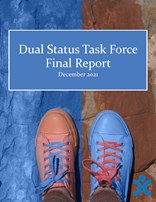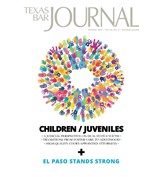2018 Texas Judicial Council Committee Report and Recommendations on Juvenile Justice
The Dual Status Task Force (DSTF) convened from July 2019 to December 2020 and was co-chaired by Judge Gary Coley of the 74th District Court in Waco and Judge Lisa Jarrett of the 436th District Court in San Antonio. The Task Force created six workgroups: Agency Coordination, Data, Definitions, Judicial Practices, Legal Representation & Advocacy, and Training. Approximately 80 subject matter experts from throughout Texas participated in the Task Force and workgroup discussions over the 18-month duration of the Task Force. Each of the six DSTF workgroups developed recommendations specific to their assigned topic. There was significant overlap as many of the issues are interrelated.
Members (July 2019-December 2020): Hon. Gary Coley, co-chair, Hon. Lisa Jarrett, co-chair, Julian Apolinar, Charles Batiste, Hon. Renee Betancourt, Kimberly Burley, Hon. Darlene Byrne, Angel Carroll, Wayne Carson, Sarah Crockett, Kim Dayton, Michele Deitch, Katya Dow, Debra Emerson, Hon. Dena Fisher, Teal De La Garza, Hon. Delia Gonzales, Quyona Gregg, Sean Grove, Anissa Johnson, Hon. Cheryll Mabray, Jill Mata, Chief Estela Medina, Rosie Medina, Brett Merfish, Kate Murphy, Hon. Valencia Nash, Kelly Opot, Cindy Patrick, Lauren Rose, Hon. Dean Rucker, Riley Shaw, Kaci Singer, David Slayton, Matt Smith, Stephanie Stevens, Kaysie Taccetta, Jeffrey Tsunekawa, Hon. Cyndi Wheless.
Staff: Jamie Bernstein, Tiffany Edwards


